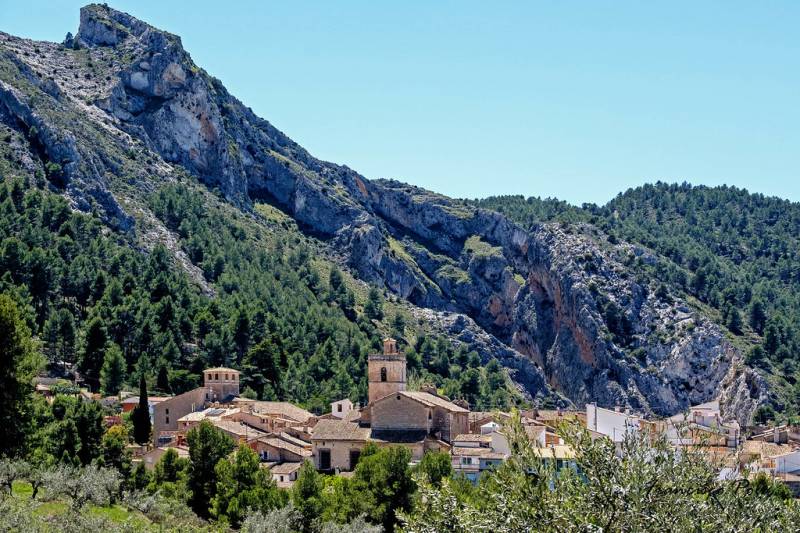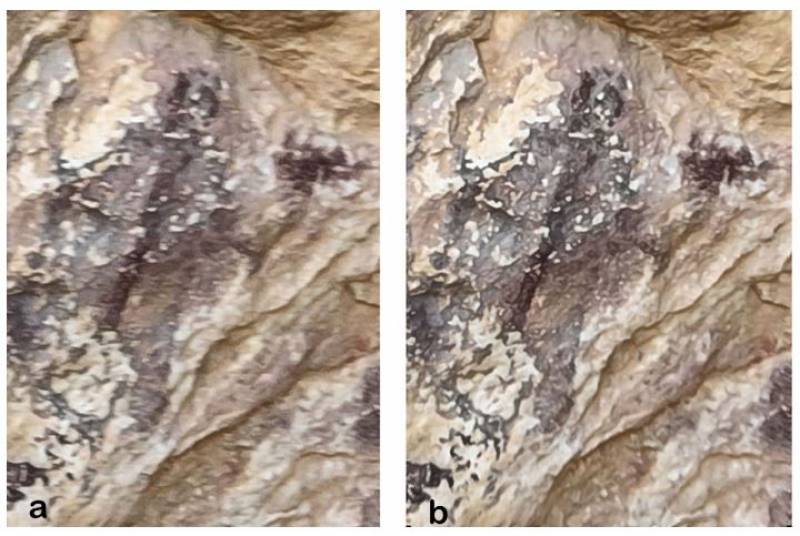Drone discovers inaccessible cave art that lay hidden for 7,000 years
Archaeologists describe the site in Penáguila, Alicante, as one of the most relevant areas documented in the Valencian Region
 Incredible footage of cave paintings believed to be around 7,000 years old has been captured by a drone in Penáguila, Alicante.
Incredible footage of cave paintings believed to be around 7,000 years old has been captured by a drone in Penáguila, Alicante.
Alicante province has 130 rock shelters, caves, covachas or ravines that hide prehistoric paintings, more than any other province in Spain.
The latest fascinating discovery has been made at a site of great value with Neolithic paintings uncovered in several caves difficult to access on foot. The find is part of a pioneering project involving three researchers from the University of Alicante (UA).
According to the archaeologists, this is one of the first discoveries of prehistoric cave paintings made possible thanks to the use of a small unmanned aerial vehicle in almost inaccessible mountain shelters that could only be inspected directly after several days of preparation and the opening of complex climbing routes.
The site is located in the Barranquet del Castellet-Barranc del Salt and Port de Penáguila area, where the drone has photographed and recorded videos of the cavity walls of 18 shallow shelters and discovered paintings in two of them.
Also read: Residents flee to roof of high-rise block of flats after huge fire erupts in Benidorm
The findings have just been published in one of Spain's leading archaeological journals, the XLII issue of 'Lvcentvm'.
Among the new cavities discovered, one in El Salt stands out for the large number of painted figures belonging to the Levantine style with superimpositions, specifically female anthropomorphs and archers, as well as deer and goats, some wounded with arrows.

"Thanks to the drone we have discovered a new site with prehistoric cave paintings of different styles, which we believe will be very relevant for our ongoing research," said archaeologist and pilot of the drone, Molina Hernández.
The Valencian Government's General Directorate of Culture and Heritage has been notified and the authenticity and relevance of the discovery has been certified after climbers Alex Mora i Monllor and Natxo Gómez Orsby were able to access the cavity.
According to the archaeologists, this is "one of the most relevant sites of Neolithic cave art documented in the Valencian Community in recent decades" and may be "the beginning of many other discoveries that will occur in the coming years in shelters that had gone unnoticed because they were located in areas of very difficult access".
And the scientists plan to continue to "incorporate the use of drones in locating sites from different historical periods that are tricky to access", and "take advantage of this recent experience in the future".
Also of interest: These are the Costa Blanca towns where expats will be voting next week...
Image: Comunitat Valenciana
Sign up for the Spanish News Today Editors Roundup Weekly Bulletin and get an email with all the week’s news straight to your inbox
Special offer: Subscribe now for 25% off (36.95 euros for 48 Bulletins)
OR
you can sign up to our FREE weekly roundup!
Read some of our recent bulletins:
Discount Special Offer subscription:
36.95€ for 48 Editor’s Weekly News Roundup bulletins!
Please CLICK THE BUTTON to subscribe.
(List price 3 months 12 Bulletins)
Read more stories from around Spain:





























